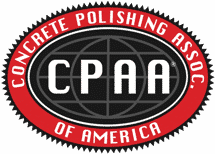Concrete expansion joints are a critical aspect of construction, and they play a vital role in ensuring the longevity and structural integrity of concrete surfaces. These joints are intentional gaps or spaces left between concrete slabs, which allows them to expand and contract without causing cracks or damage.
Expansion joints are essential in most types of concrete applications, from highways and bridges to buildings and sidewalks, where large concrete surfaces are subjected to temperature fluctuations, moisture variations, and other natural elements.
Let’s take a closer look at a few different kinds of concrete expansion joints and why they are necessary.
What Is the Purpose of Concrete Expansion Joints?
The primary purpose of concrete expansion joints is to accommodate the natural expansion and contraction of concrete due to temperature changes and other external factors. When concrete is exposed to temperature variations, it expands and contracts as it is heated and cooled.
Without expansion joints, these changes can result in a buildup of internal stress within the concrete which can result in cracks and other types of structural damage. Expansion joints provide the necessary flexibility for concrete to shift and move without compromising its stability.
Types of Expansion Joints
There are several types of expansion joints used in a variety of applications, and each one has a specific purpose.
Isolation Joints
These joints separate concrete slabs from adjacent structures like walls or columns, preventing direct contact and potential damage due to movement.
Control Joints
Also known as contraction joints, these are intentional gaps that are installed at regular intervals in a concrete slab. These joints can be created while the concrete is still wet, or they can be sawed after the concrete sets.
Adding control joints to a concrete slab provides a place for cracks to form in a controlled manner, which reduces the chances of the formation of random cracks.
Expansion Joints
These joints are positioned at regular intervals to allow for the expansion and contraction of concrete. They often use compressible materials like foam or rubber to fill the gap, which accommodates movement while maintaining a seal.
How Do Expansion Joints Improve Longevity?
Expansion joints improve a concrete slab’s longevity in many different ways. Let’s take a look at a few of the benefits that concrete expansion joints offer.
Reducing Structural Damage
Over time, concrete will begin to crack and degrade, and this process is significantly accelerated in the absence of concrete expansion joints. When cracks form on a concrete surface, this can lead to the infiltration of moisture, chemicals, and debris, which will further deteriorate the concrete and damage its reinforcement.
Expansion joints help prevent these issues by providing gaps that accommodate movement while minimizing the entry of harmful substances.
Stress Management
As concrete expands and contracts with temperature fluctuations, this movement creates stress within the material. Without expansion joints, the stress can lead to the formation of uncontrolled cracks as the concrete looks for a way to accommodate the movement.
Expansion joints provide controlled areas for these cracks to occur, which relieves stress and prevents random cracks from forming. By managing stress, expansion joints reduce the likelihood of severe cracking that can compromise the structural integrity of the concrete.
High-Quality Concrete Expansion Joints in Southwest Florida
At JDL Surface Innovations, we specialize in many industrial flooring applications, such as concrete expansion joints, concrete polishing, epoxy flooring, and more. If you are looking for a reliable and professional concrete flooring expert in Southwest Florida, then JDL is here for you.
Click here to get started today!
















